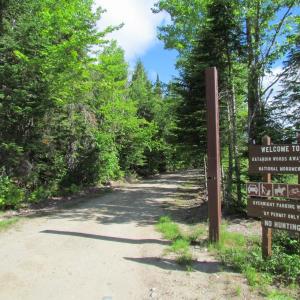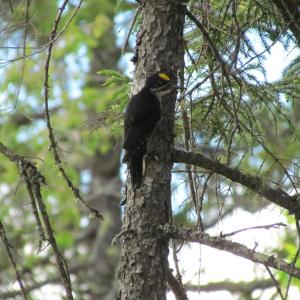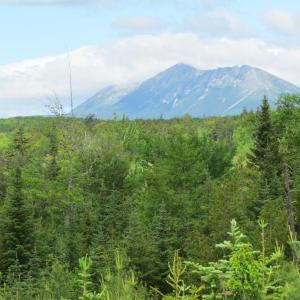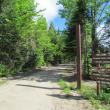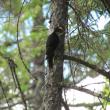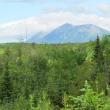Celebrating Five Years: Katahdin Woods and Waters National Monument
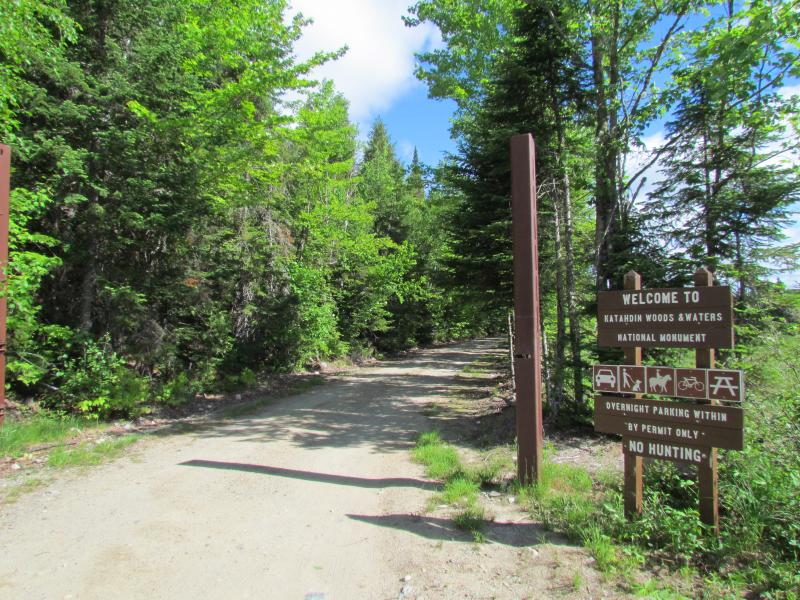 Access to Katahdin Woods and Waters National Monument is excellent and continues to be upgraded annually. Photo courtesy of Jeff and Allison Wells.
Access to Katahdin Woods and Waters National Monument is excellent and continues to be upgraded annually. Photo courtesy of Jeff and Allison Wells.
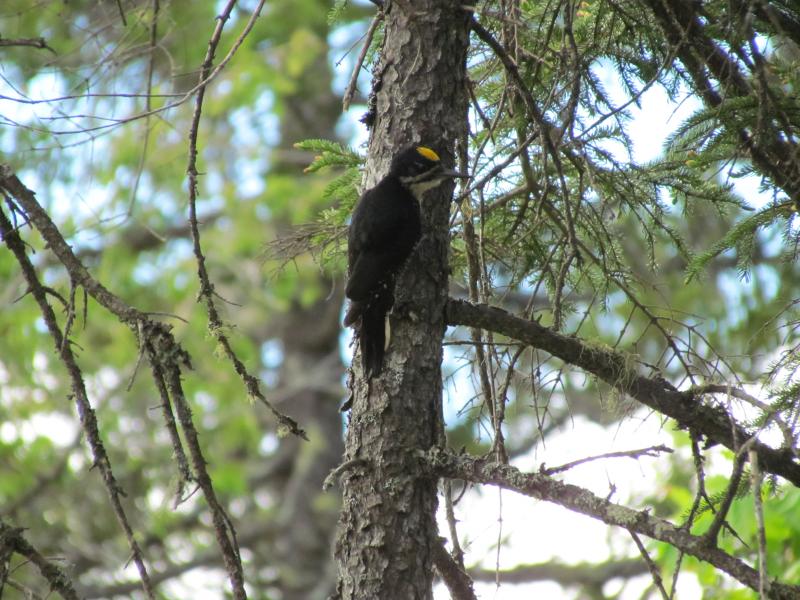 One of the sought-after species by many out-of-state birders that occurs in Katahdin Woods and Waters National Park is the black-backed woodpecker. This one was photographed near Lynx Pond in the Monument. Photo courtesy of Allison and Jeff Wells.
One of the sought-after species by many out-of-state birders that occurs in Katahdin Woods and Waters National Park is the black-backed woodpecker. This one was photographed near Lynx Pond in the Monument. Photo courtesy of Allison and Jeff Wells.
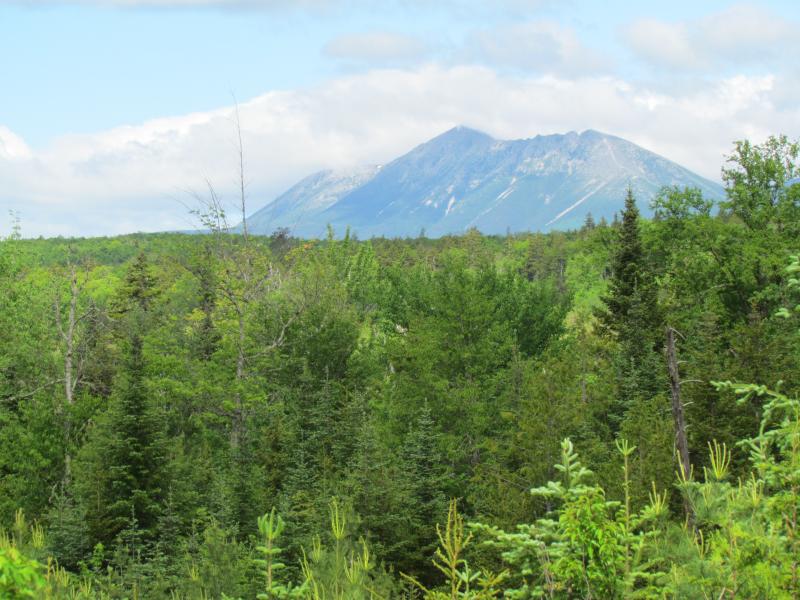 The impressive site of Katahdin within nearby Baxter State Park looms over the forest from many overlooks within Katahdin Woods and Waters National Monument. Photo courtesy of Allison and Jeff Wells.
The impressive site of Katahdin within nearby Baxter State Park looms over the forest from many overlooks within Katahdin Woods and Waters National Monument. Photo courtesy of Allison and Jeff Wells.
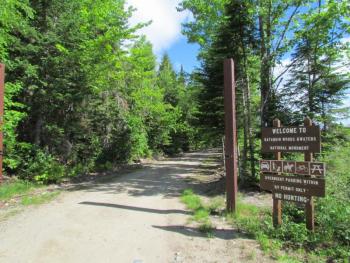 Access to Katahdin Woods and Waters National Monument is excellent and continues to be upgraded annually. Photo courtesy of Jeff and Allison Wells.
Access to Katahdin Woods and Waters National Monument is excellent and continues to be upgraded annually. Photo courtesy of Jeff and Allison Wells.
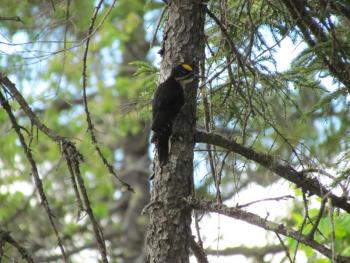 One of the sought-after species by many out-of-state birders that occurs in Katahdin Woods and Waters National Park is the black-backed woodpecker. This one was photographed near Lynx Pond in the Monument. Photo courtesy of Allison and Jeff Wells.
One of the sought-after species by many out-of-state birders that occurs in Katahdin Woods and Waters National Park is the black-backed woodpecker. This one was photographed near Lynx Pond in the Monument. Photo courtesy of Allison and Jeff Wells.
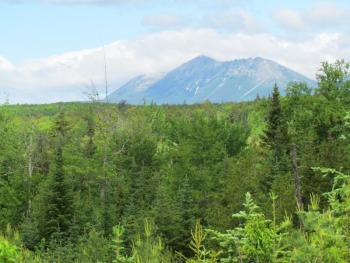 The impressive site of Katahdin within nearby Baxter State Park looms over the forest from many overlooks within Katahdin Woods and Waters National Monument. Photo courtesy of Allison and Jeff Wells.
The impressive site of Katahdin within nearby Baxter State Park looms over the forest from many overlooks within Katahdin Woods and Waters National Monument. Photo courtesy of Allison and Jeff Wells.
It’s hard to believe that it has been five years since Maine’s first national monument — Katahdin Woods and Waters — was signed into being. On Aug. 24, 2016, following many years of hard work, an incredible 87,500 acres of northern forest landscape became permanently protected. The land is a woven quilt of mountains, bogs, ponds, streams, and rivers. Nestled up against the eastern side of another of Maine’s most beloved treasures—Baxter State Park—the lands of Katahdin Woods and Waters, combined with the park and other conservations lands, makes up a massive area that protects an immensity of trees and other plants as well as birds, mammals, snakes, amphibians, fish, insects, and other wildlife. As if that were not amazing enough, the forests that are part of the landscape here are cleansing the atmosphere of climate-changing carbon and locking it into long-term storage while pumping out the oxygen that keeps us all alive.
A conservative estimate would place the number of breeding and migrant birds that rely on the park well into the hundreds of thousands. At a time when our world is suffering from massive losses of biodiversity—including the estimated decline in numbers of North American birds by 2.9 billion over the last 40 years—the permanent protection of 87,500 acres of life-giving bird habitat was great news in 2016. Five years later, in the midst of devastating fires, hurricanes, and other storms across the hemisphere, it still gives us much-needed hope for the future.
Part of that hope includes the economic boost for the Millinocket area from the creation of Katahdin Woods and Waters National Monument. Last year more than 41,000 people visited the Monument and delivered more than 2.7 million dollars to the local economy, helping lodging establishments, restaurants, stores, and gas stations. That’s a number that will only continue to grow as Maine, the nation, and eventually the world leave the epidemic behind.
We have visited the Monument a number of times but have barely scratched the surface of what it has to offer, even if all we were looking for were birds and other wildlife.
Moose and black bear? Yes, we’ve seen them there up close and personal.
Gorgeous butterflies, cool tiger beetles, and colorful dragonflies and damselflies? We’ve seen amazing numbers of all of these and more during our summer visits.
And the birds? Incredible! Virtually every northern Maine specialty bird species—the ones people travel to Maine to see from all over the U.S.—can be found in Katahdin Woods and Waters National Monument. Canada jays, boreal chickadees, spruce grouse, black-backed woodpeckers, rusty blackbirds, olive-sided flycatchers, yellow-bellied flycatchers, Cape May warblers, bay-breasted warblers, palm warblers, Lincoln’s sparrows—they all nest within its boundaries. Summer mornings in the Monument ring with the exuberant bubbling songs of winter wrens and ruby-crowned kinglets, and the flutey echoes of hermit and Swainson’s thrushes and the Veery.
At this time of year, scores of migrating songbirds are passing through the forests and wetlands of Katahdin Woods and Waters National Monument on their long journeys south from points north. Here they find the food, water, and safe resting places that will give them a better chance of fattening up to make flights that may take them as far south as the Caribbean, or to Central America or South America.
These birds will need more such protected places along their flyways if they are to survive and thrive. In fact, there is a growing consensus that a modern global conservation goal should be to ensure that at least 30% of lands and waters are protected by 2030—the so-called “30 by 30 initiative,” which we have written about in a past column.
May we all continue supporting the policies and funding needed to continue the significant land conservation that modern science tells us is needed at the local, state, national, and international level. The funding of the Land for Maine’s Future program for $40 million over four years in the most recent Maine state budget, for example, is an important step forward to achieving the level of conservation needed to keep birds and other wildlife from disappearing while ensuring healthy air and water for ourselves, our kids, and our grandkids.
So, let’s all give a cheer to remember and celebrate the first five years of one of Maine’s most significant modern land conservation achievements—the creation of Katahdin Woods and Waters National Park. Be sure to visit often, and to make your voice heard on any opportunity to conserve land for generations to come.
You can listen to the authors’ sound recordings of Katahdin Woods and Waters National Monument here:
https://soundcloud.com/birdwells/winter-wren-greets-dawn-in
Jeffrey V. Wells, Ph.D., is a Fellow of the Cornell Lab of Ornithology and Vice President of Boreal Conservation for National Audubon. Dr. Wells is one of the nation's leading bird experts and conservation biologists and author of the “Birder’s Conservation Handbook.” His grandfather, the late John Chase, was a columnist for the Boothbay Register for many years. Allison Childs Wells, formerly of the Cornell Lab of Ornithology, is a senior director at the Natural Resources Council of Maine, a nonprofit membership organization working statewide to protect the nature of Maine. Both are widely published natural history writers and are the authors of the popular books, “Maine’s Favorite Birds” (Tilbury House) and “Birds of Aruba, Bonaire, and Curaçao: A Site and Field Guide,” (Cornell University Press).
Event Date
Address
United States

